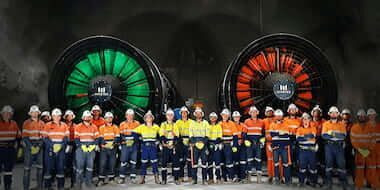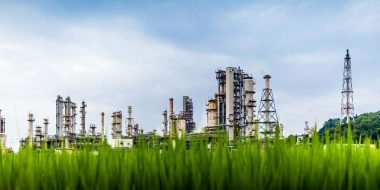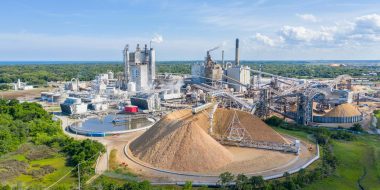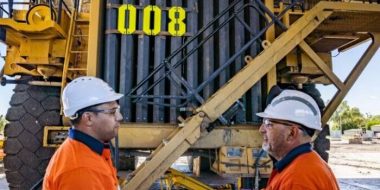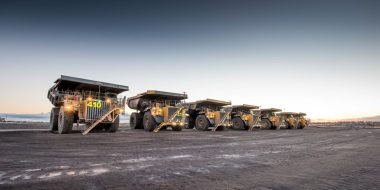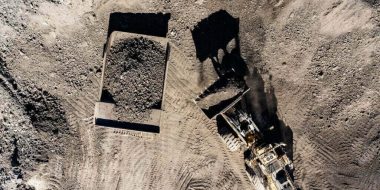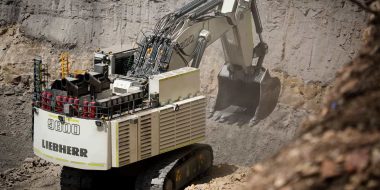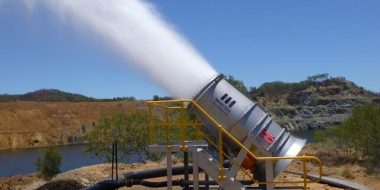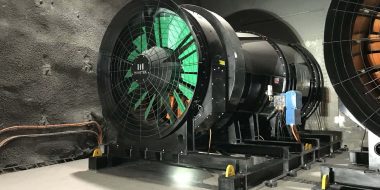Mining equipment and machinery like haul trucks, excavators and dozers are fundamental to mining operations. Large mining excavators are used as earthmovers to extract the materials, whereas mining haul trucks transport ore to the processing area and remove overburden and waste from the mine site. Although mining trucks and equipment are essential for the mines operation, this machinery is inherently noisy and emits noise pollution.
Major sources of noise on mining machinery & equipment
One of the biggest challenges when it comes to diesel mining trucks and equipment is reducing the machines noise output. Prolonged exposure to high noise levels can lead to permanent and irreversible hearing damage, known as Noise Induced Hearing Loss (NIHS) [2]. Noise control strategies are determined by noise exposure levels are in place to protect workers hearing and reduce machinery downtime. Controls may include; PPE (Personal Protective Equipment) such as ear mufflers, exhaust silencers and mufflers, sound attenuation solutions, and enclosed cabins.

Length of time for noise exposure before standards are exceeded (Safe Work Australia)

The main contributors to mining truck and equipment noise include a variety of components, such as;
- Radiator
- Fans
- Hydraulic pump(s)
- Engine
- Exhaust
Radiators, engines, exhausts fans and hydraulic pumps on mining trucks and machinery emit both high and low-frequency sounds. The frequency of these sounds reflects the intensity and distance they travel. The standard measure of frequency is in Hertz (Hz), this calculates the number of times that a sound wave or vibration occurs or repeats itself in a specified time, typically 1 second cycles per second.
According to Australia’s Environmental Protection Authority, low-frequency noise ranges between 10 – 160 Hertz (Hz) and is typically background noise [1]. Low-frequency noises consist of fewer sound waves and typically travel a long distance. High-frequency noises are typically high-pitched, measuring above 2000 Hz with high sound intensity. Low-frequency sounds tend to impact local mining communities and compliance due to the long distances they travel. Whereas high-frequency sounds between 4000-6000Hz pose a risk to hearing within the noise source’s vicinity [2].
These components are typically located within engine compartment, however the precise component generating noise is difficult to determine. Through Minetek’s innovative acoustic visualisation technology, we are able determine the primary source of noise and the noise frequency.

How to determine the main sources of noise
Minetek understands that excessive noise can be a complex problem for mine sites to solve. That is why we utilise innovative sound technology to accurately identify the primary source of noise on mining trucks, equipment, and machinery.
This technology creates a graphical acoustic representation of sound to detect and visualise airborne acoustic energy, creating high-contrast images that show areas of excessive noise. The acoustic visualiser backs up traditional sound microphone testing with a detailed and accurate analysis. This definitive analysis removes any assumptions, ensuring an accurate application of the appropriate sound solution.
Equipped with this data, Minetek can efficiently implement strategies to reduce sounds emitted from trucks or machinery. We enable mine sites to achieve the required operating objectives / sound levels, protecting both mining truck operators & nearby communities from excessive noise whilst meeting and maintaining compliance. In some circumstances, installing sound or acoustic barriers may be enough to address the issue. However, this method does not eliminate noise it just reduces sound levels. An in-depth approach may be necessary to effectively reduce noise levels such as attenuating equipment or changing operating procedures.
Improved accuracy, efficiency, and safety are some of the key benefits of utilising a sound visualiser during your mine site noise analysis, including. This innovative sound testing technology enables our team to quickly identify problem areas and develop customised solution that meets the specific needs of your operation. This results in reduced machinery downtime, employee protection from NIHS and environmental compliance whilst meeting noise limit restrictions. Noise limit breaches in NSW Australia are upwards of $15,000 per breach, depending on the limit of noise exceeded [5].
How to treat noise sources on mining equipment
Noise propagation is one solution to reducing noise levels. This is achieved by blocking the sound waves from travelling, such as using acoustic barriers and enclosures surrounding the mining site to block noise. While this may have some limited benefits to local communities, it does not treat the source of noise and has minimal impact on overall sound levels. Depending on the elevation / topography of the mine site, a sound wave can simply bounce over the acoustic barrier. The most effective, successful, and accurate way to treat noise directly at the source.
There are four main ways to treat the noise source;
- Blocking sound waves
- Absorbing sound waves
- Reactive frequency interactions to dampen noise
- Isolating sound waves
Another solution to treating noise sources is though sound attenuation. Sound attenuation absorbs or interrupts the sound waves, diminishing the noise output and distance it travels. There are many benefits to having a sound attenuation strategy in place for your mining operation.
Excessive noise is not only a disturbance to the local community but can also put your mining operation at risk of regulatory action such as fines or denial of mine expansions. That is why it is important to have a sound attenuation strategy in place to keep meeting and maintaining compliance with minimal operational downtime.

Minetek’s noise control solution
When it comes to NIHL (Noise Induced Hearing Loss) in the mining industry, prevention is critical to ensuring the health and safety of workers. The best protection comes from implementing a comprehensive noise control policy or program that addresses noise at the source and interrupts noise on its path [4]. This benefits the safety of employees whilst ensuring that regulatory noise levels are achieved without needing to shut down operations.
Minetek provides sound assessments, consulting, and customised engineering solutions tailored to meet the requirements of your mine site. Our comprehensive range of solutions are technically engineered to maintain or increase airflow, whilst achieving the desired regulatory noise requirements.
Minetek’s OEM (Original Equipment Manufacturers) mining packages are engineered to reduce noise levels on mining trucks, excavators, dozers, drills, loaders, and other machinery. Our world-class acoustic engineers have partnered with leading original equipment manufacturers (OEM) to deliver incredible sound reduction levels, with over 1,200+ installations across more than 90+ different OEM models. Minetek’s Sound solutions keep your machinery moving quietly without compromising machine integrity or servicing and operating ability.
Reduce the impact sound has on production, enabling mining companies to achieve true operational excellence. Make Minetek part of your sound strategy by treating major noise sources on mining trucks & machinery. To learn more about our recent sound attenuation projects or case studies, please leave your contact information below. We look forward to helping you achieve a successful sound attenuation strategy.
References
- Victoria Environmental Protection Authority – https://www.epa.vic.gov.au/for-community/environmental-information/noise/low-frequency-noise
- Department of Health and Human Services – https://www.cdc.gov/niosh/mining/UserFiles/works/pdfs/2010-111.pdf
- Department of Natural Resources, Mines and Energy – https://www.resources.qld.gov.au/__data/assets/pdf_file/0006/240369/qld-guidance-note-22.pdf
- Government of Western Australia: Department of Mines and Peteroleum – https://dmp.wa.gov.au/Documents/Safety/MSH_G_ManagementNoiseWAMiningOperations.pdf
- New South Wales Environment Protection Authority – https://www.epa.nsw.gov.au/news/media-releases/2021/epamedia210428-night-noise-limit-breach-results-in-$15000-fine-for-hunter-valley-coal-mine

